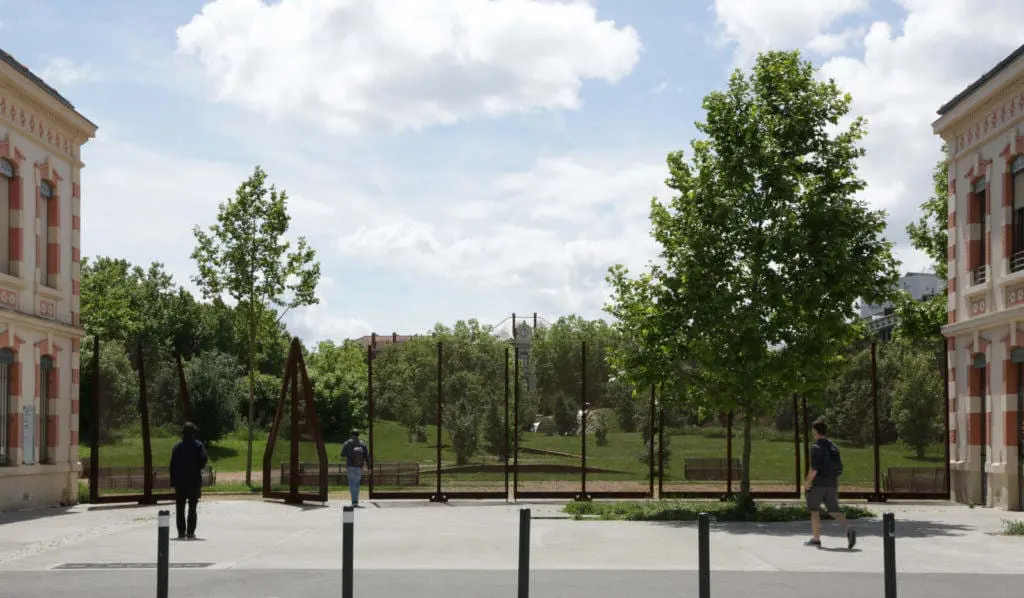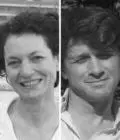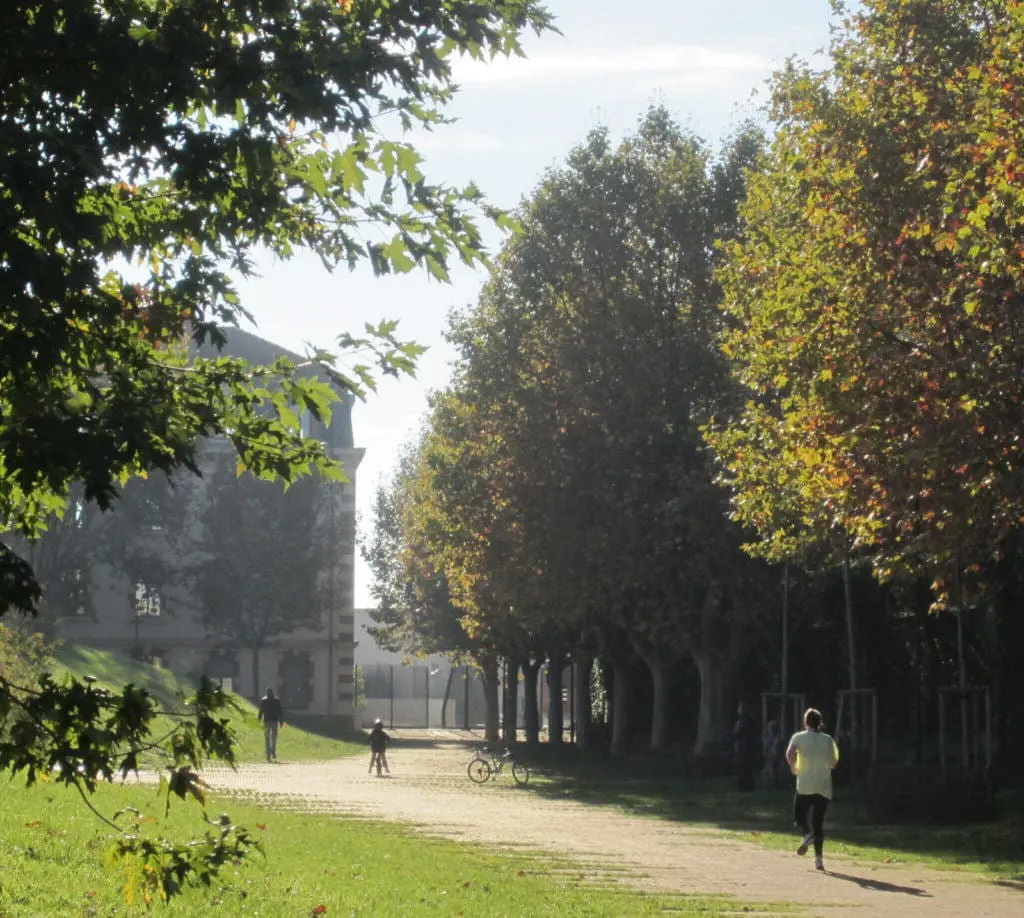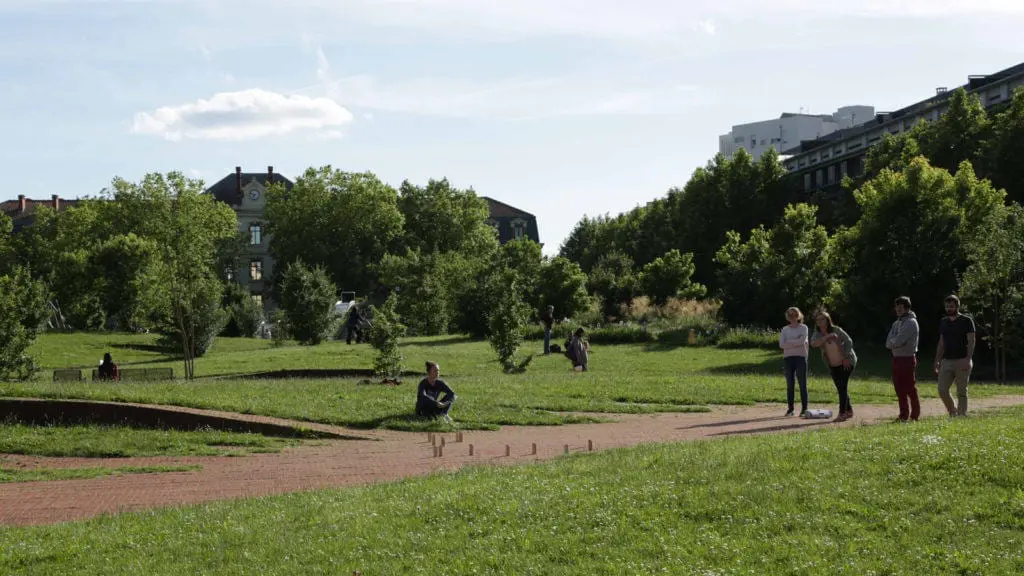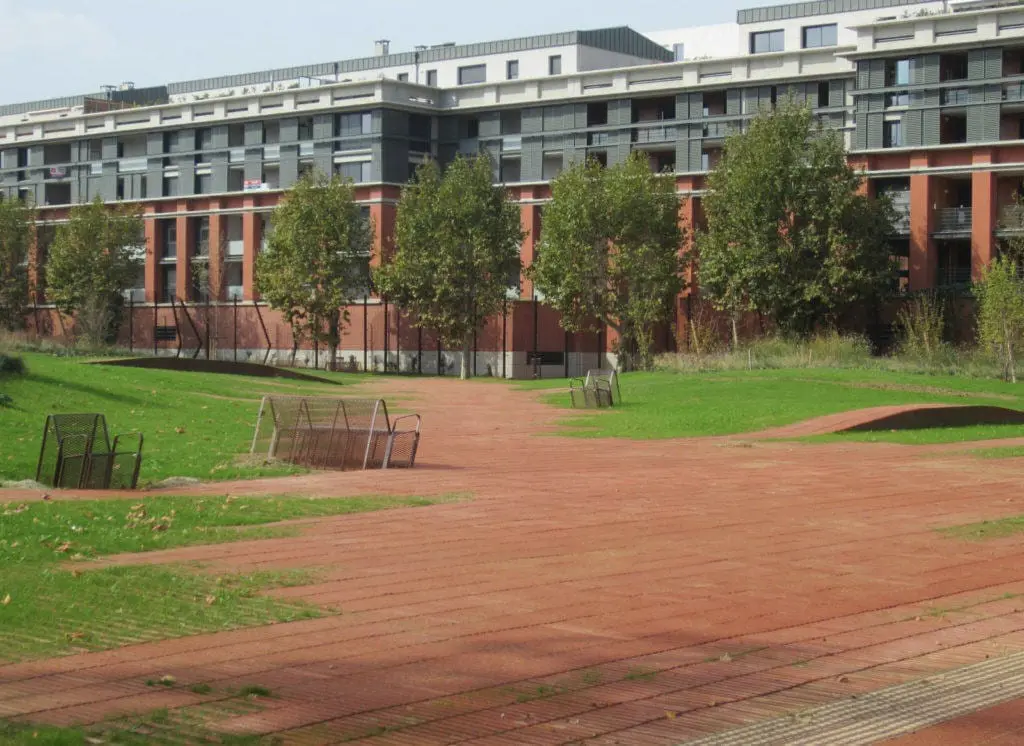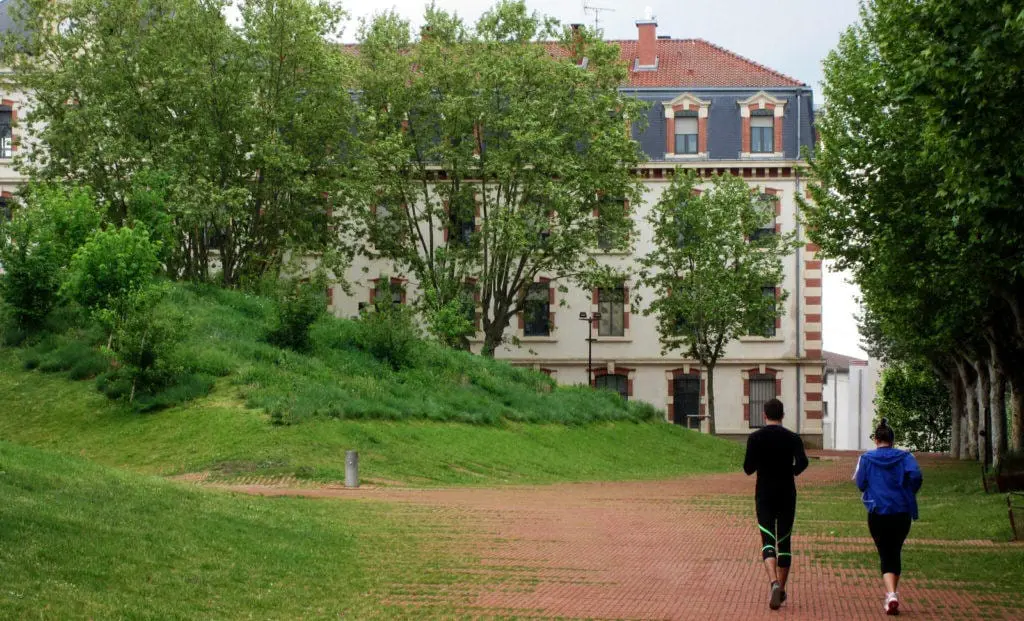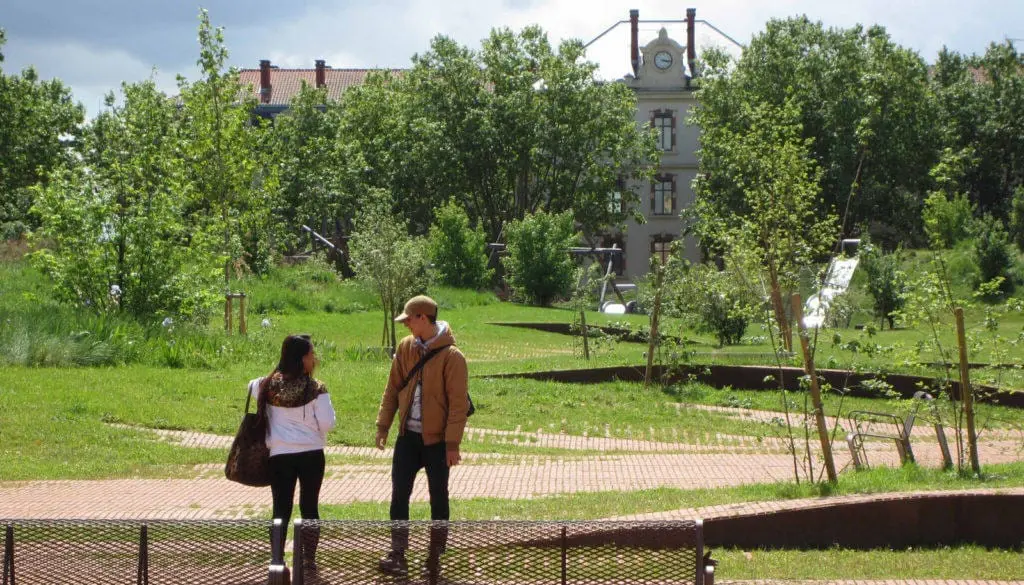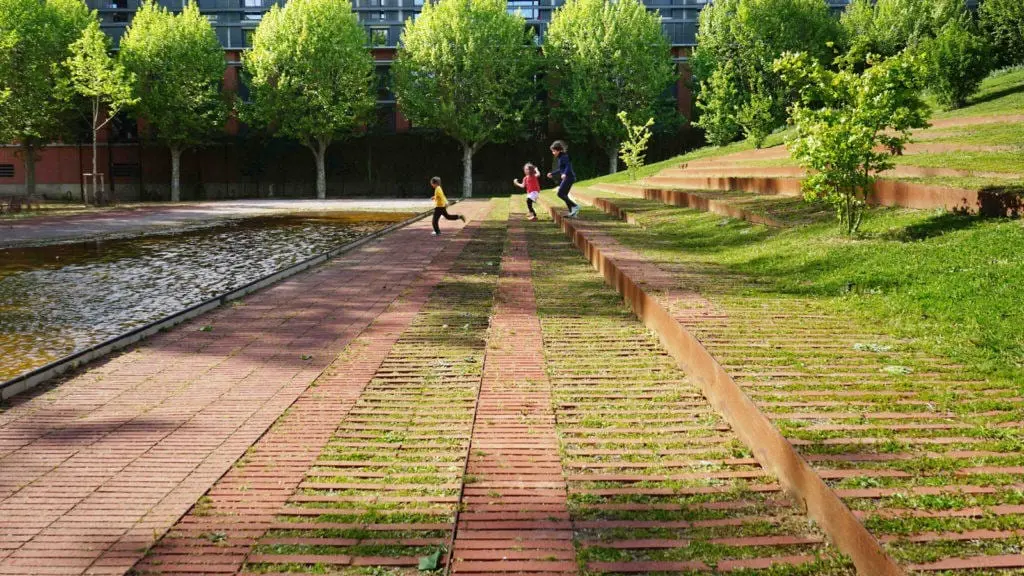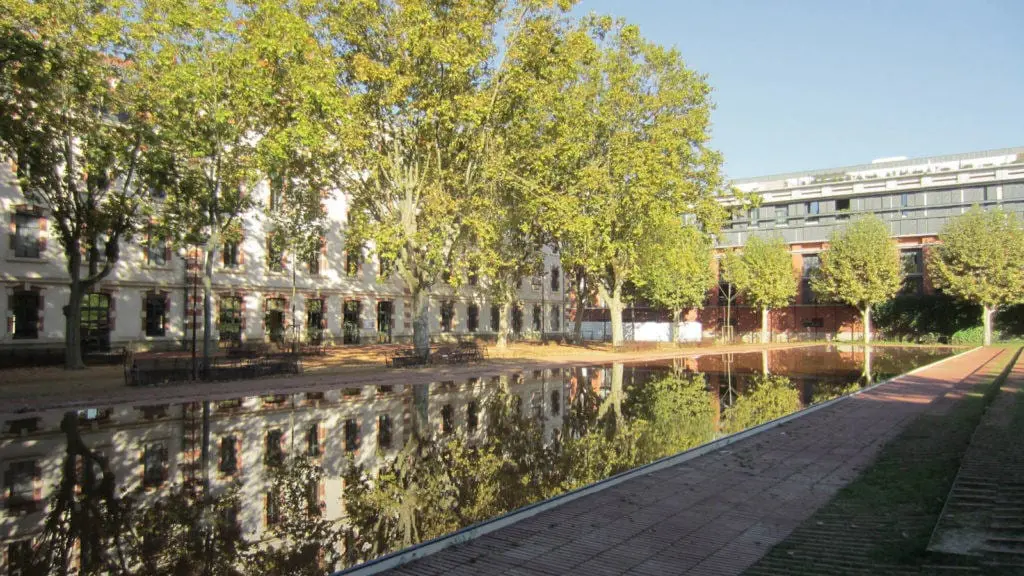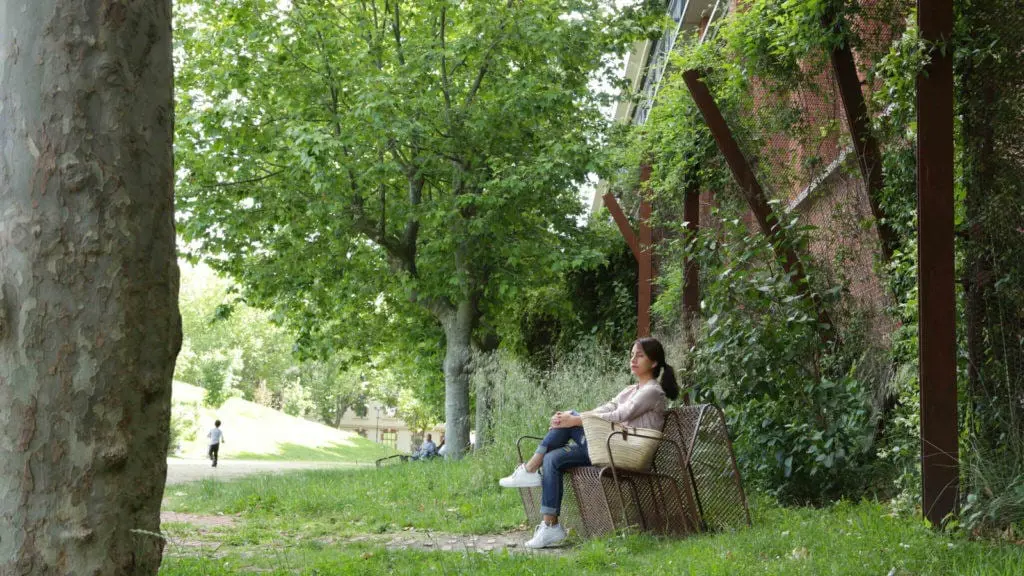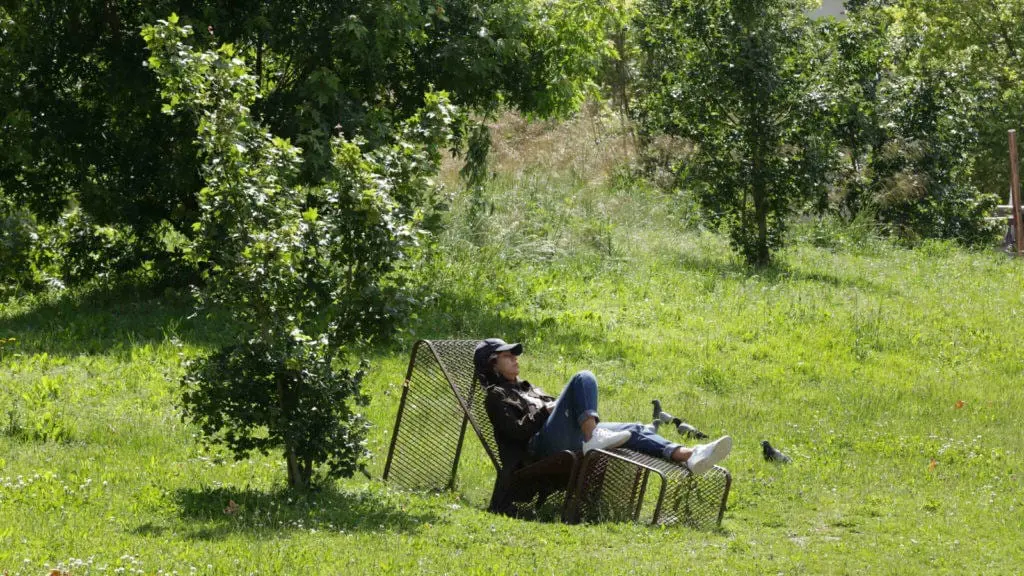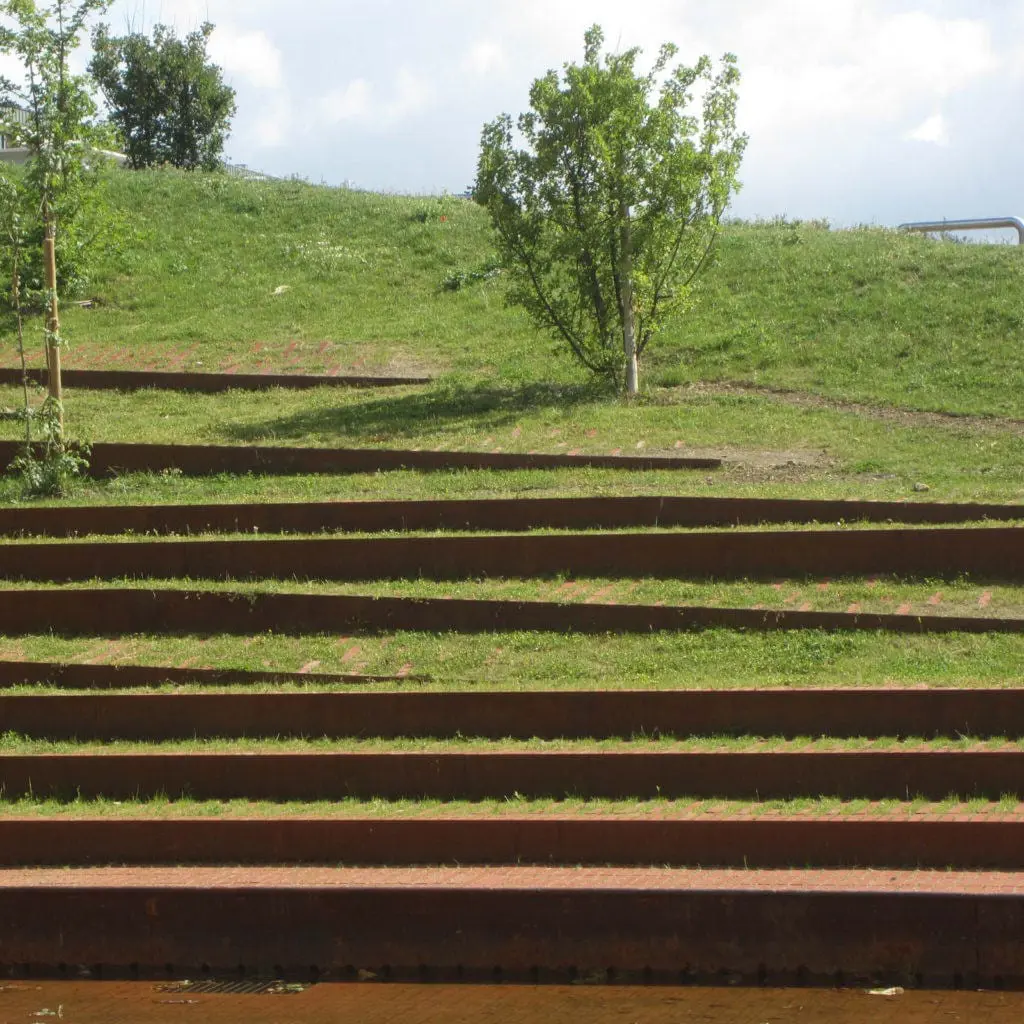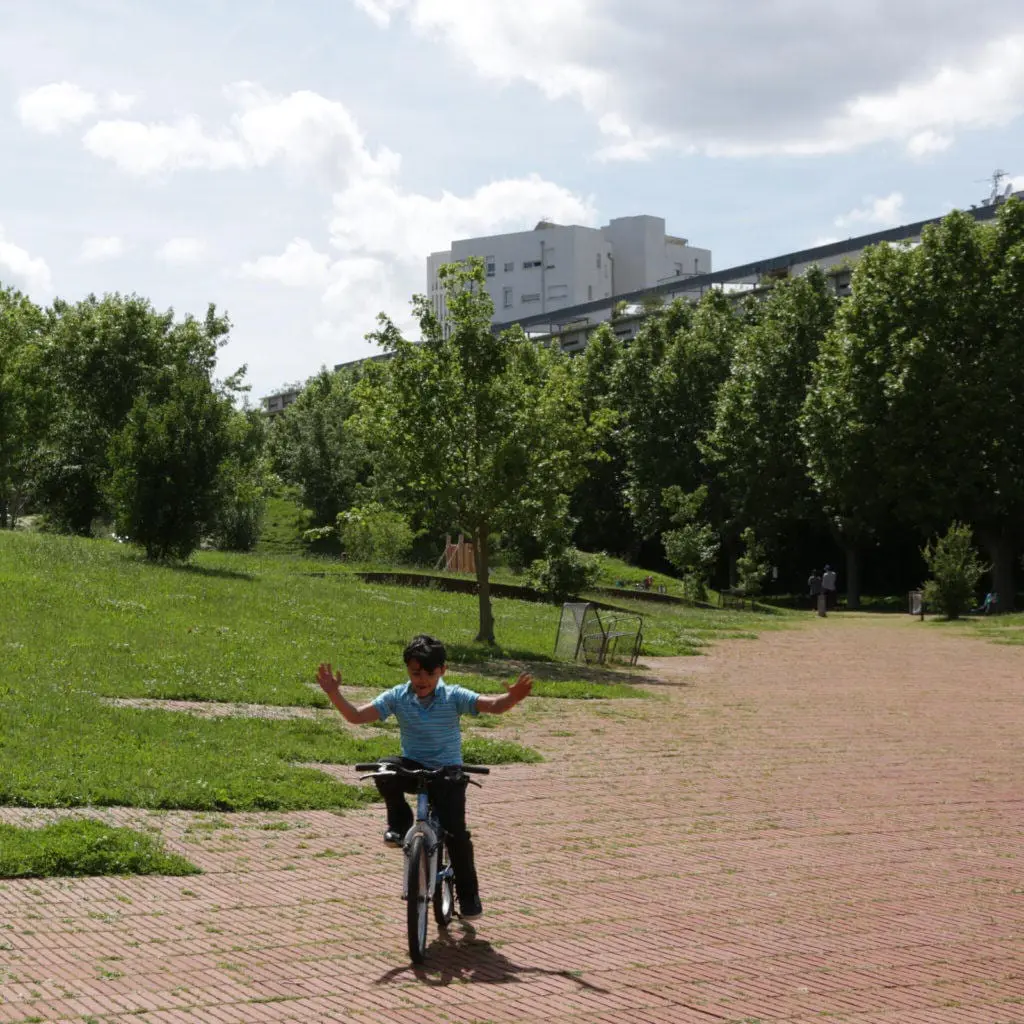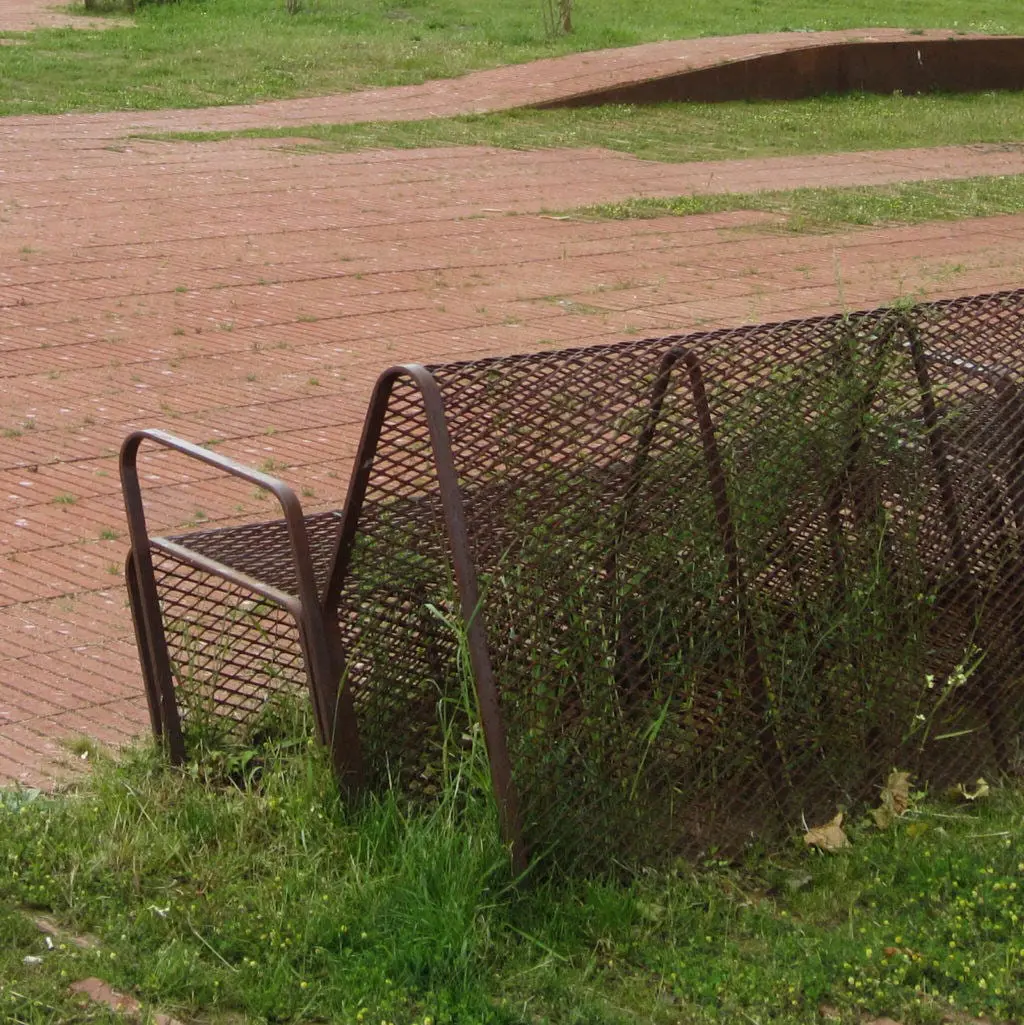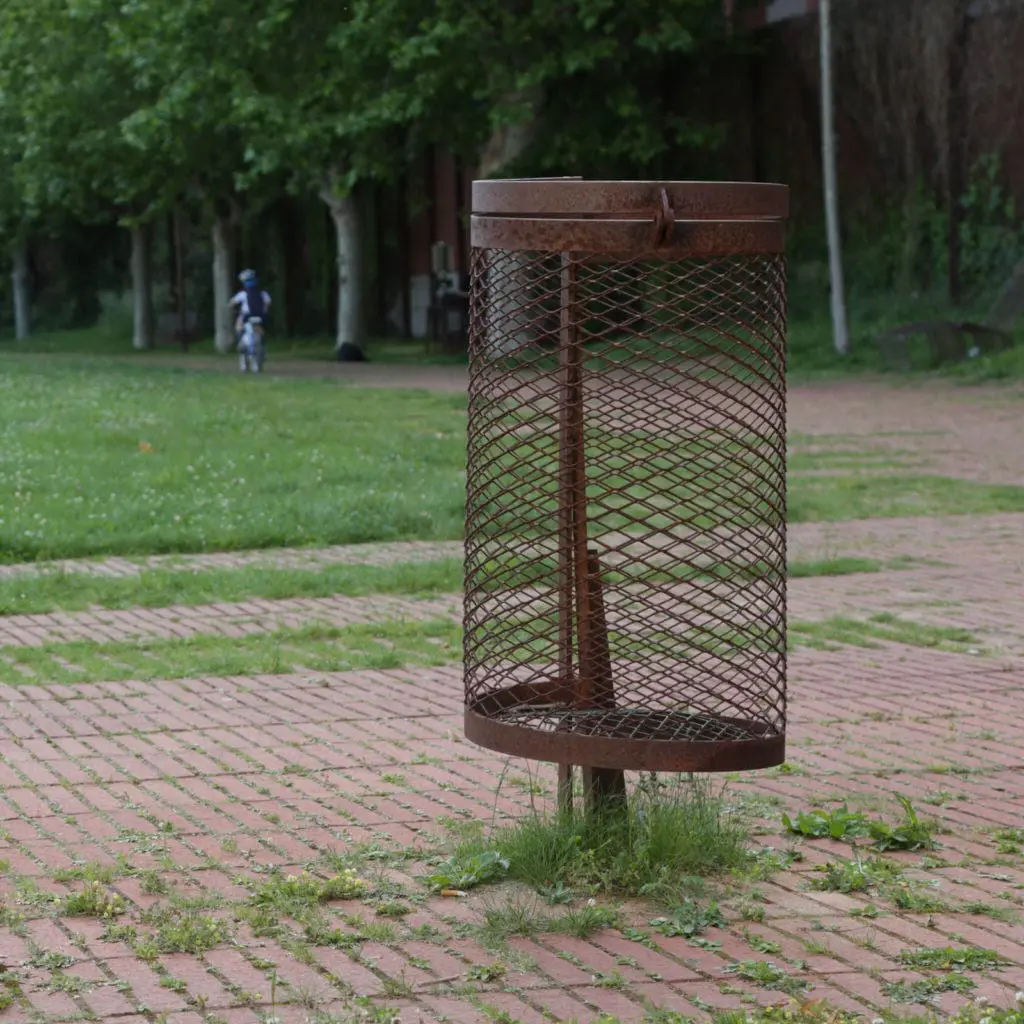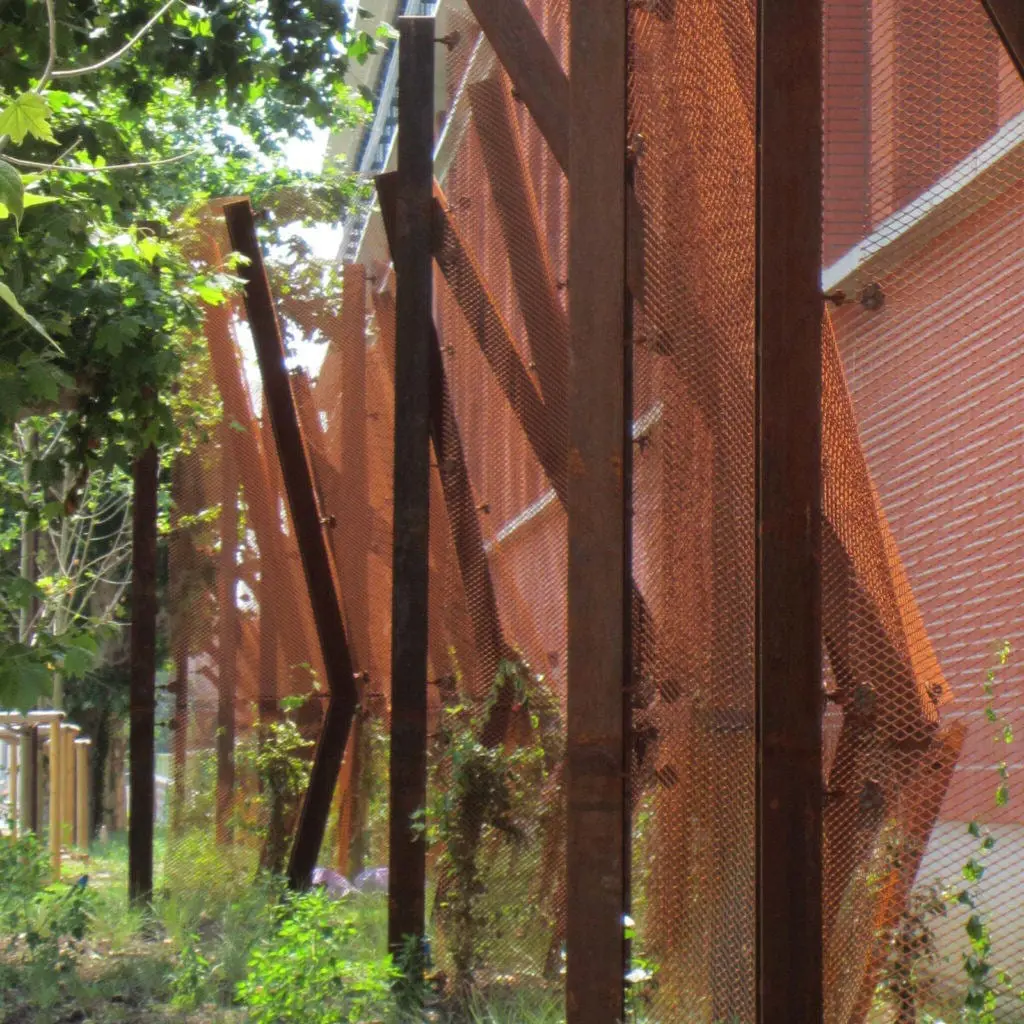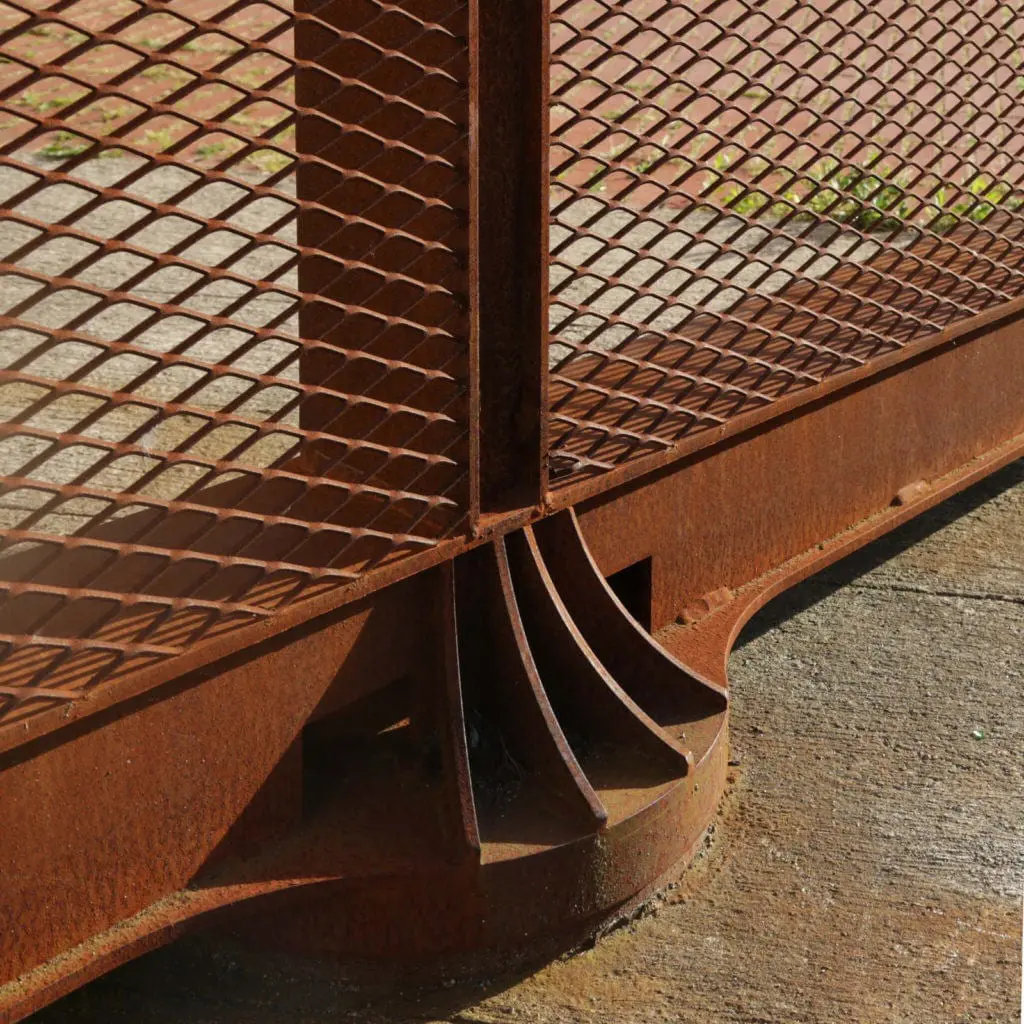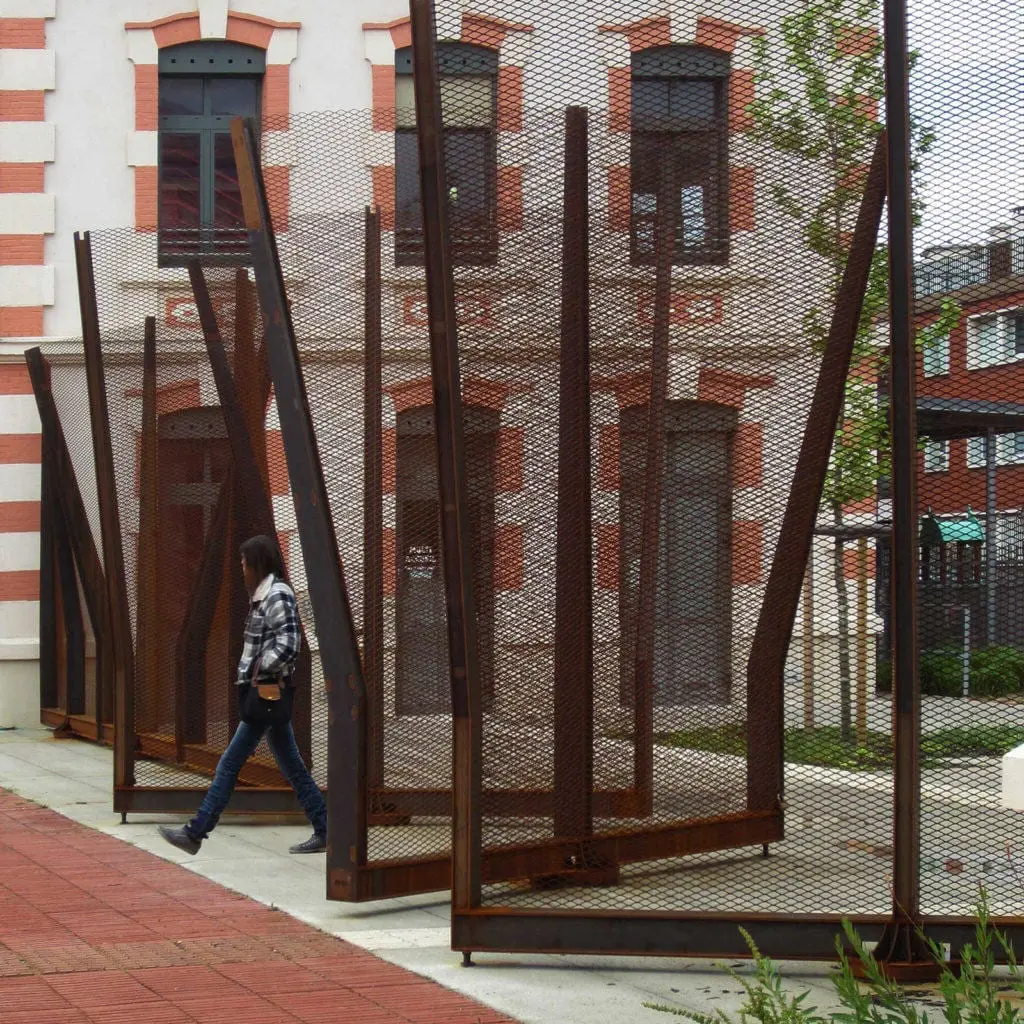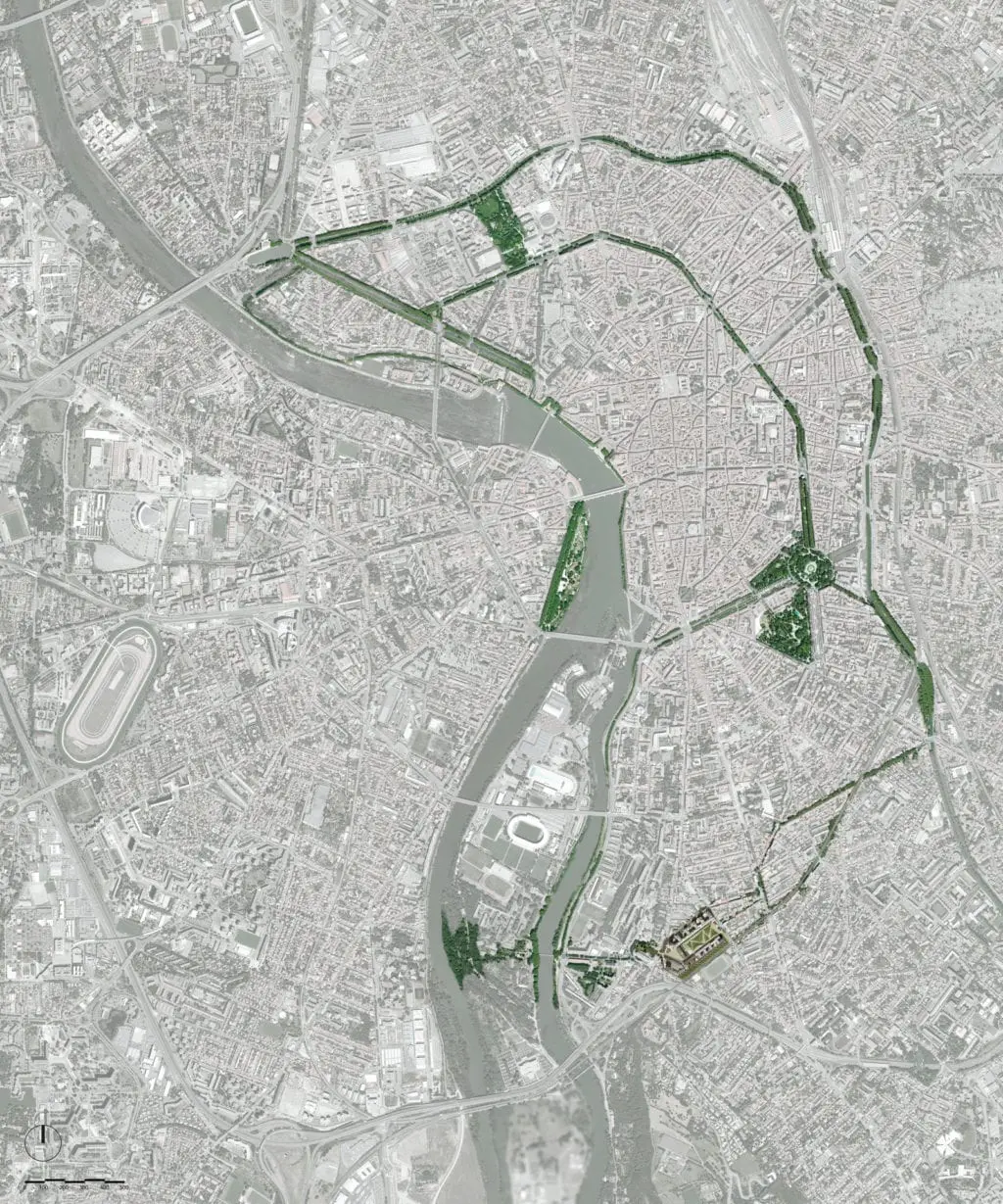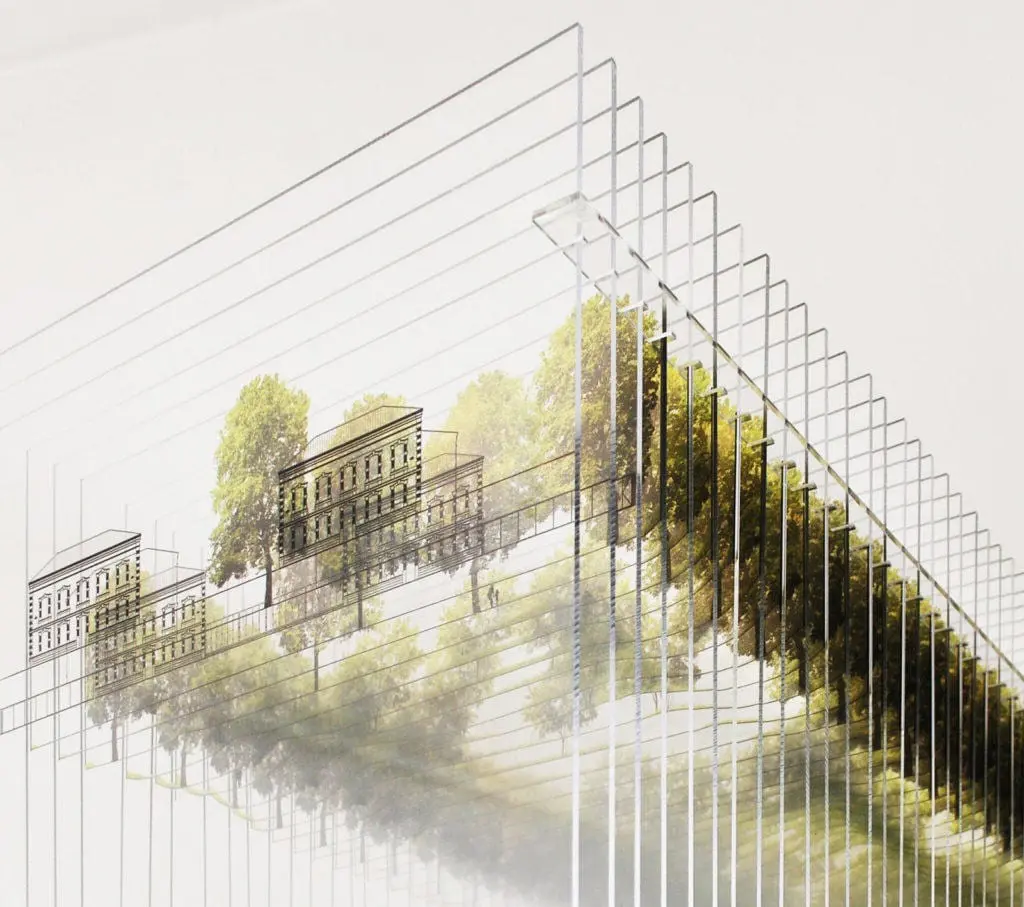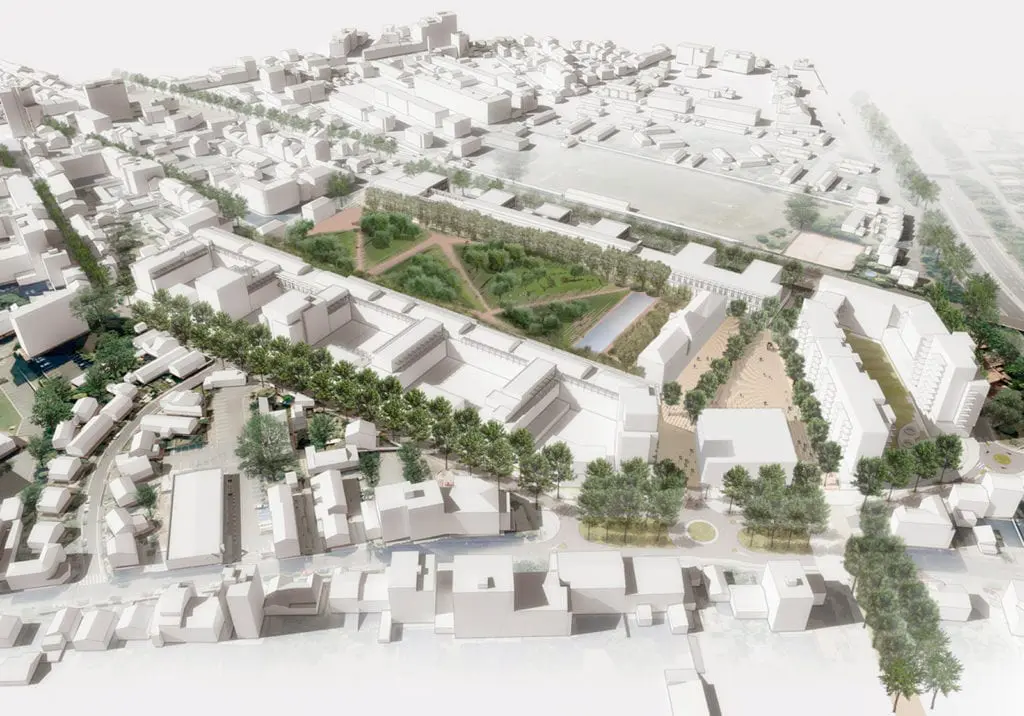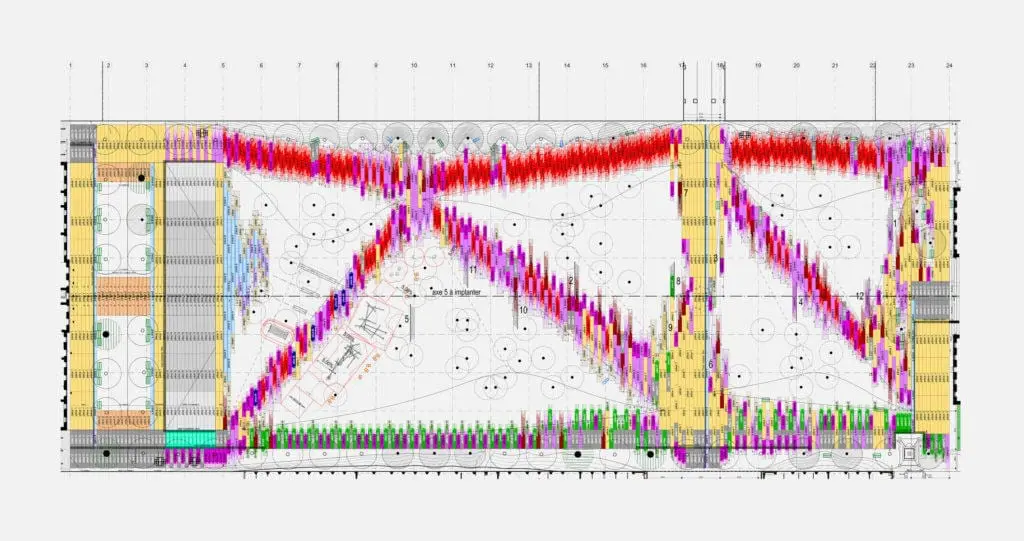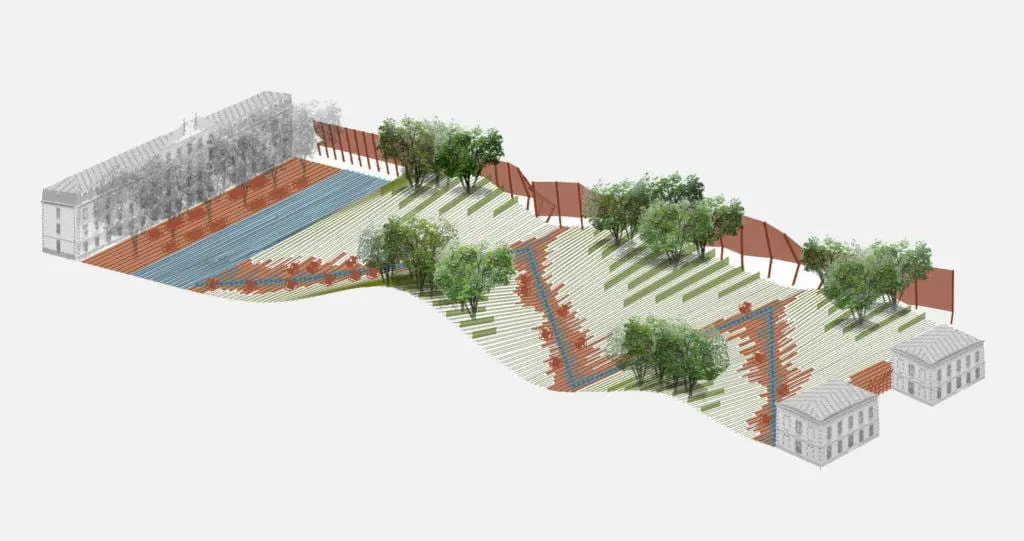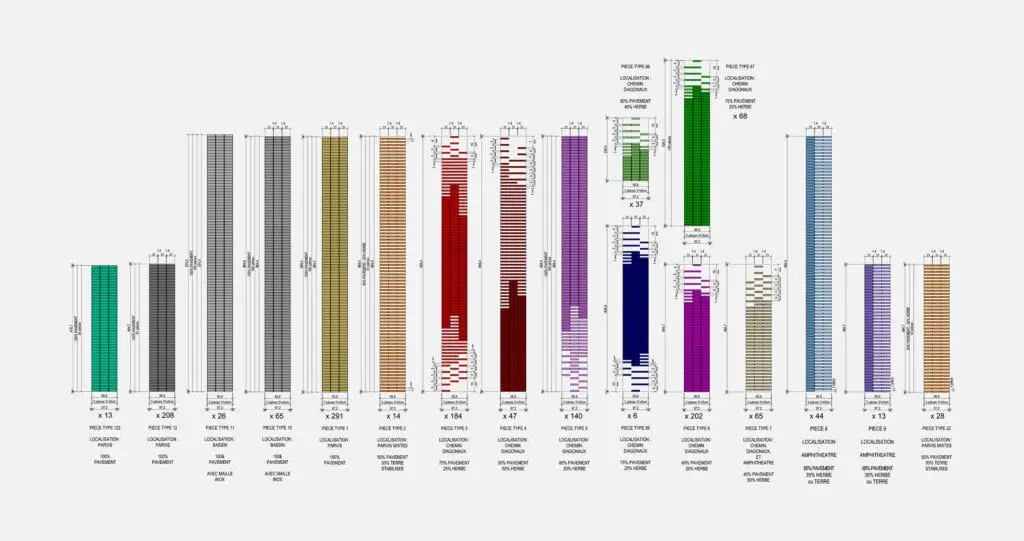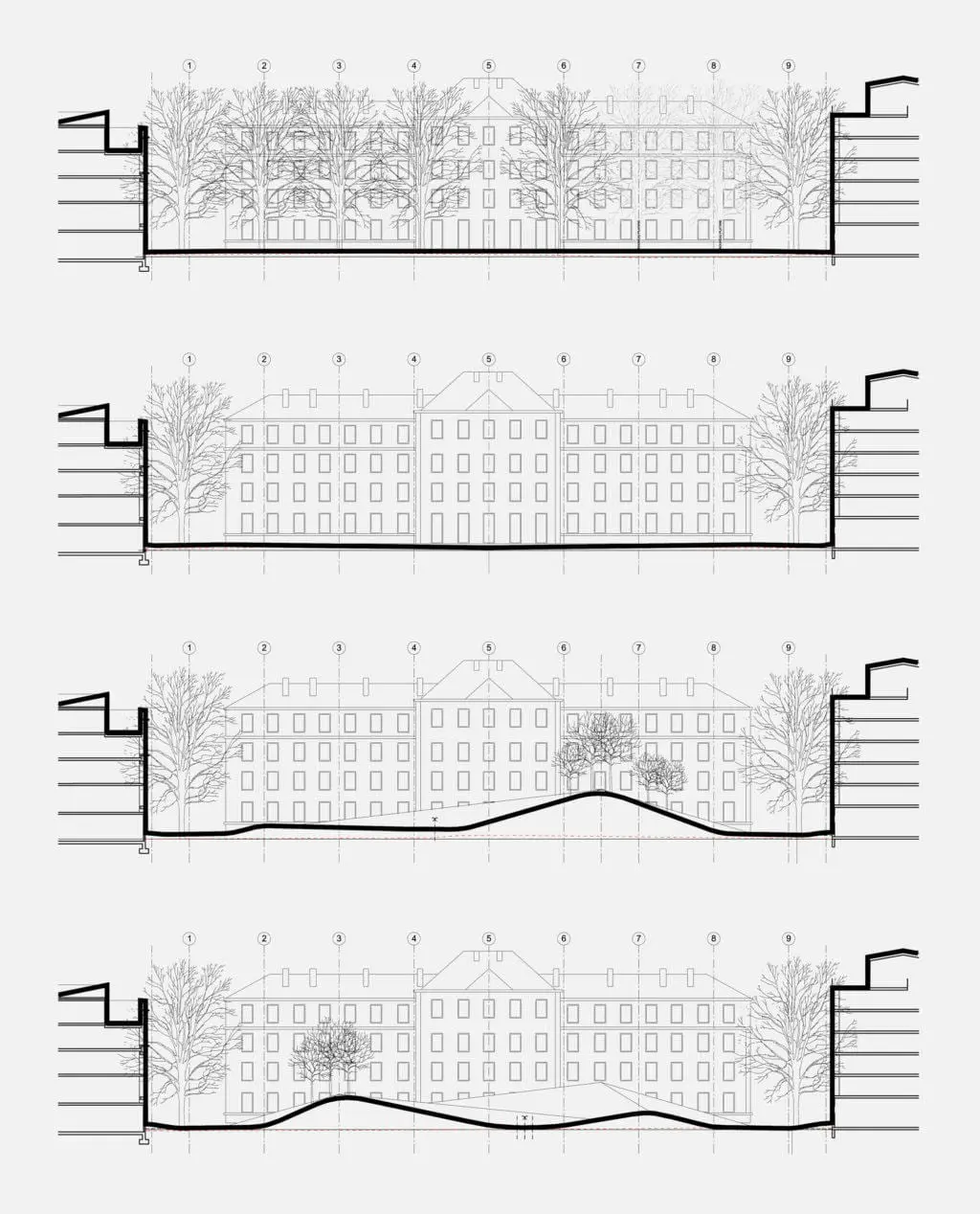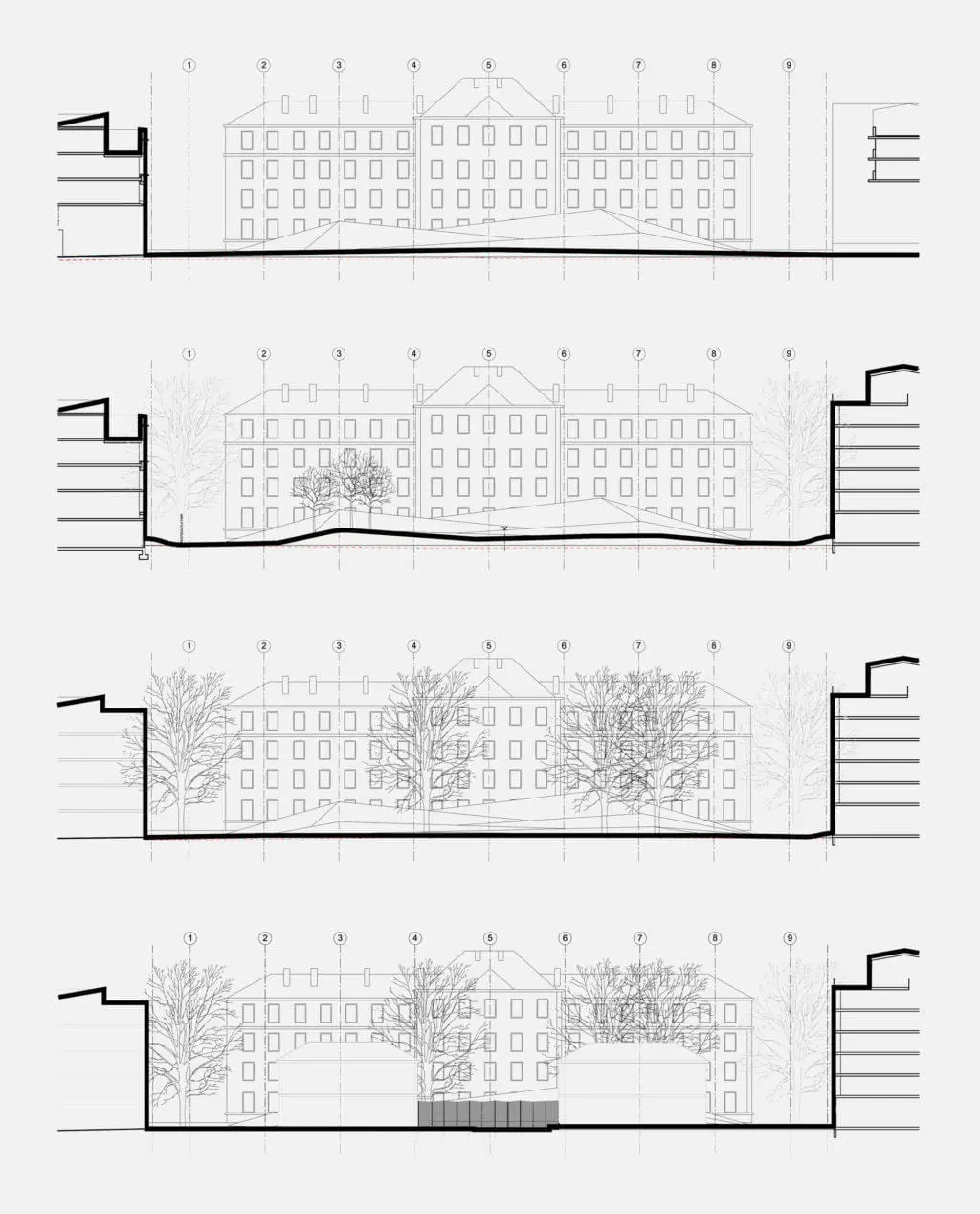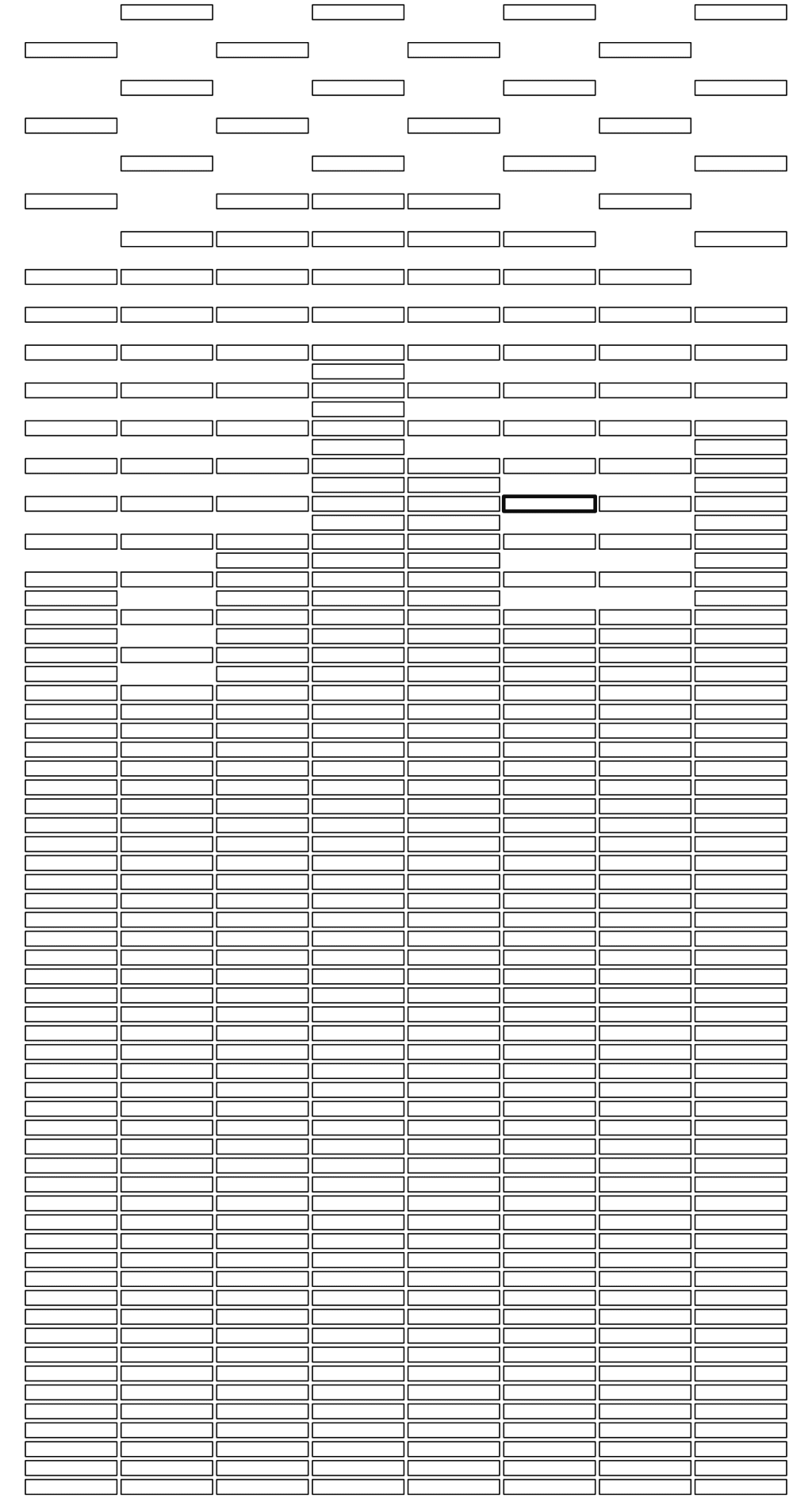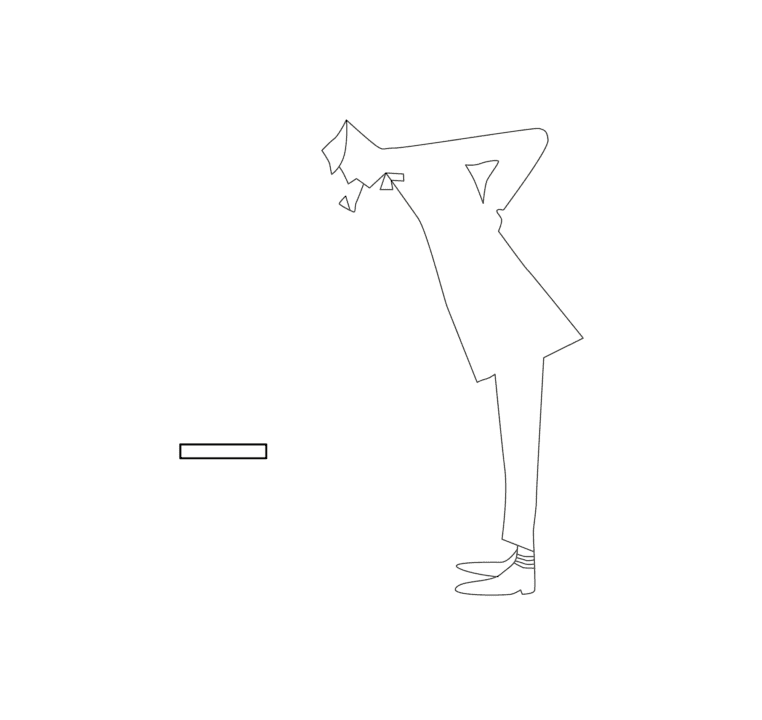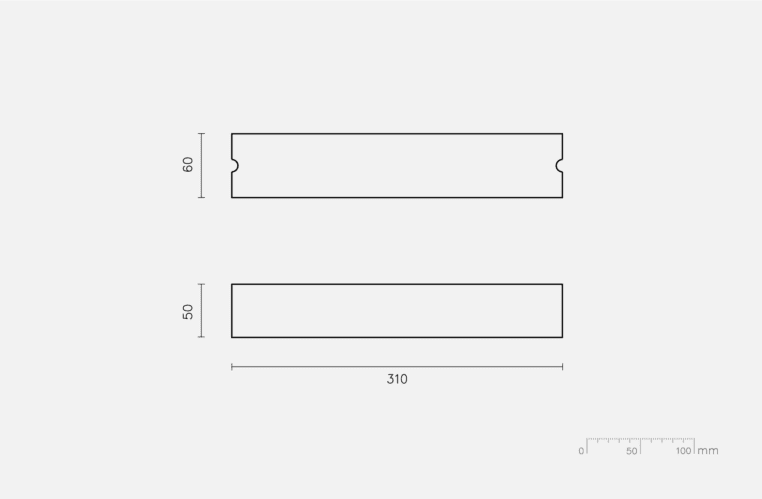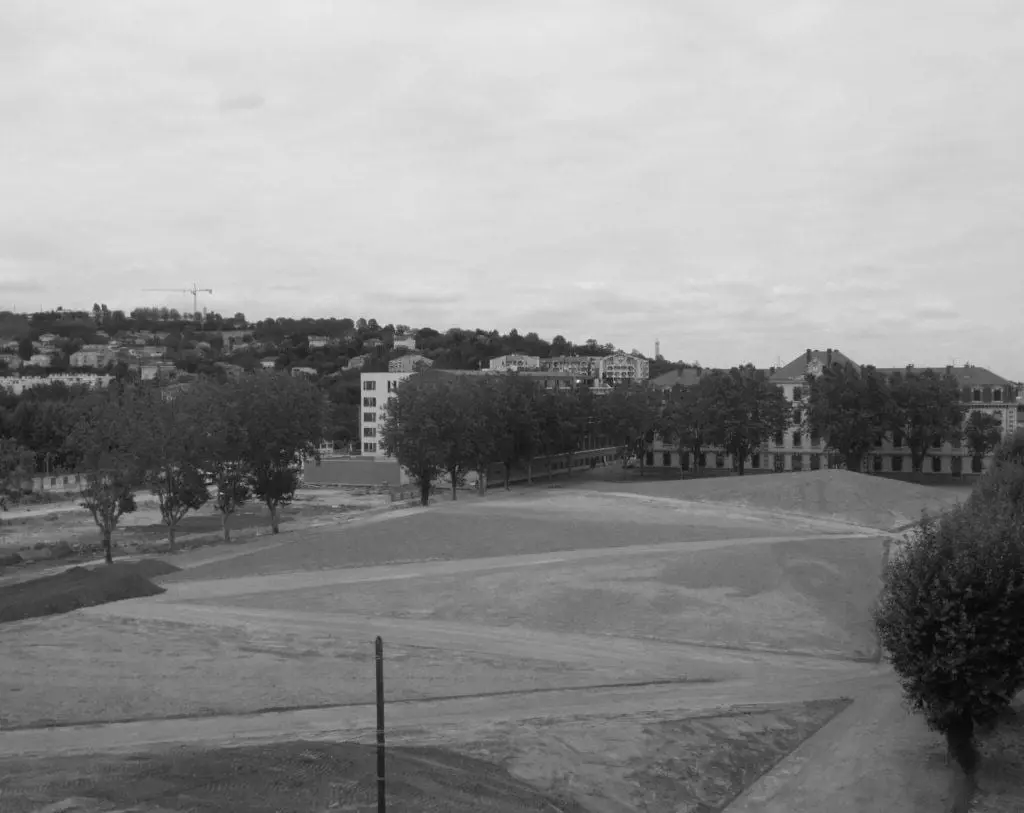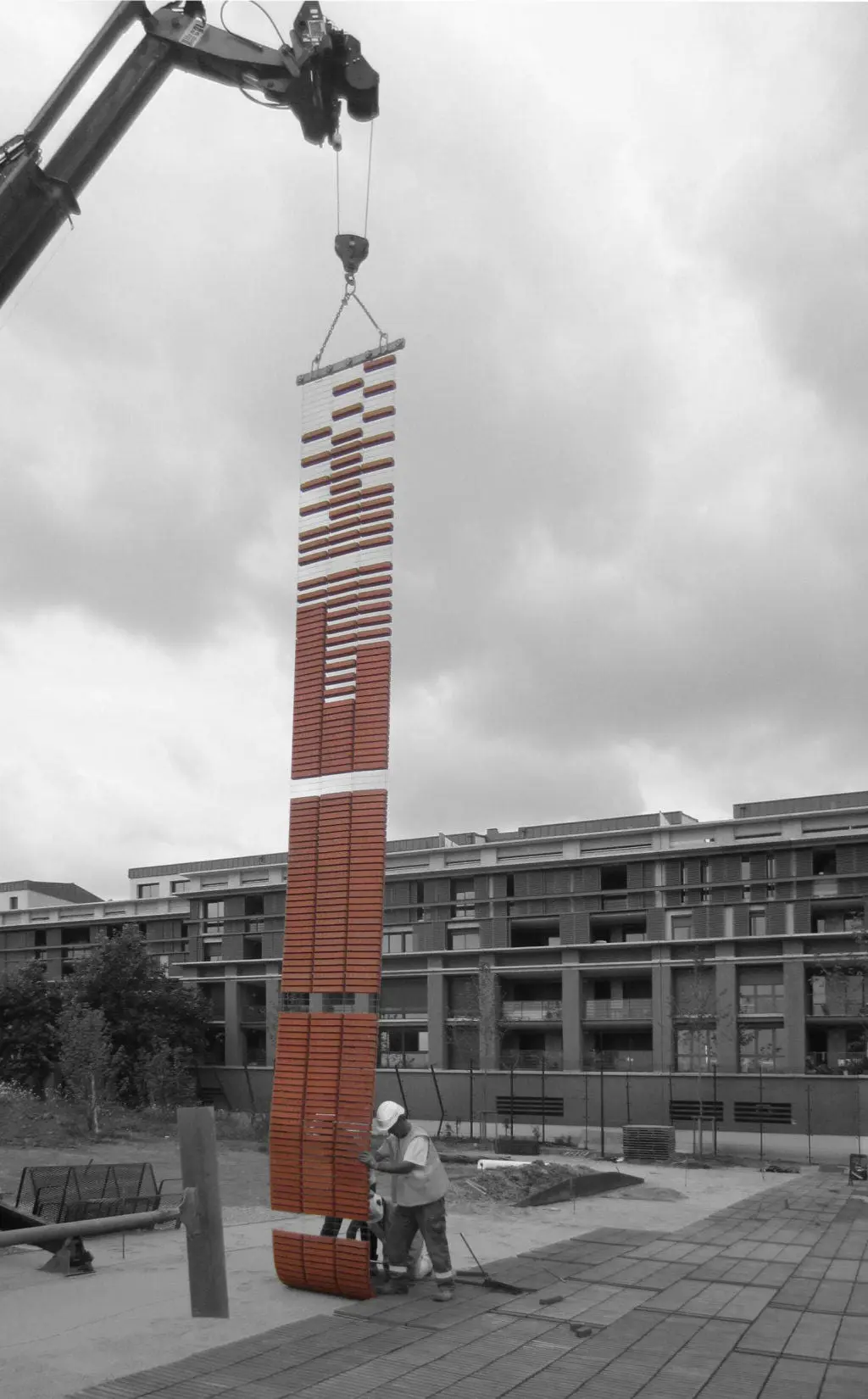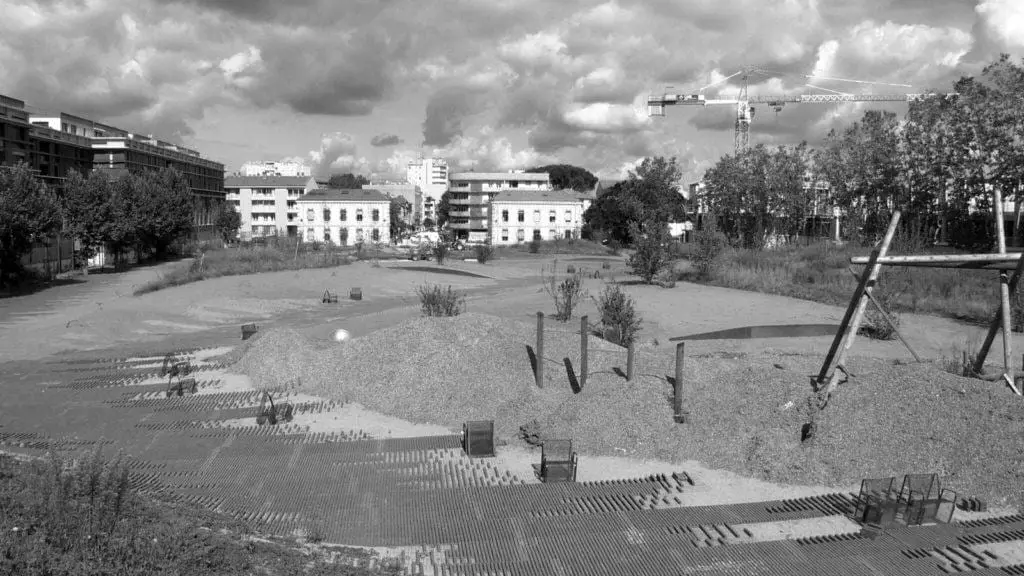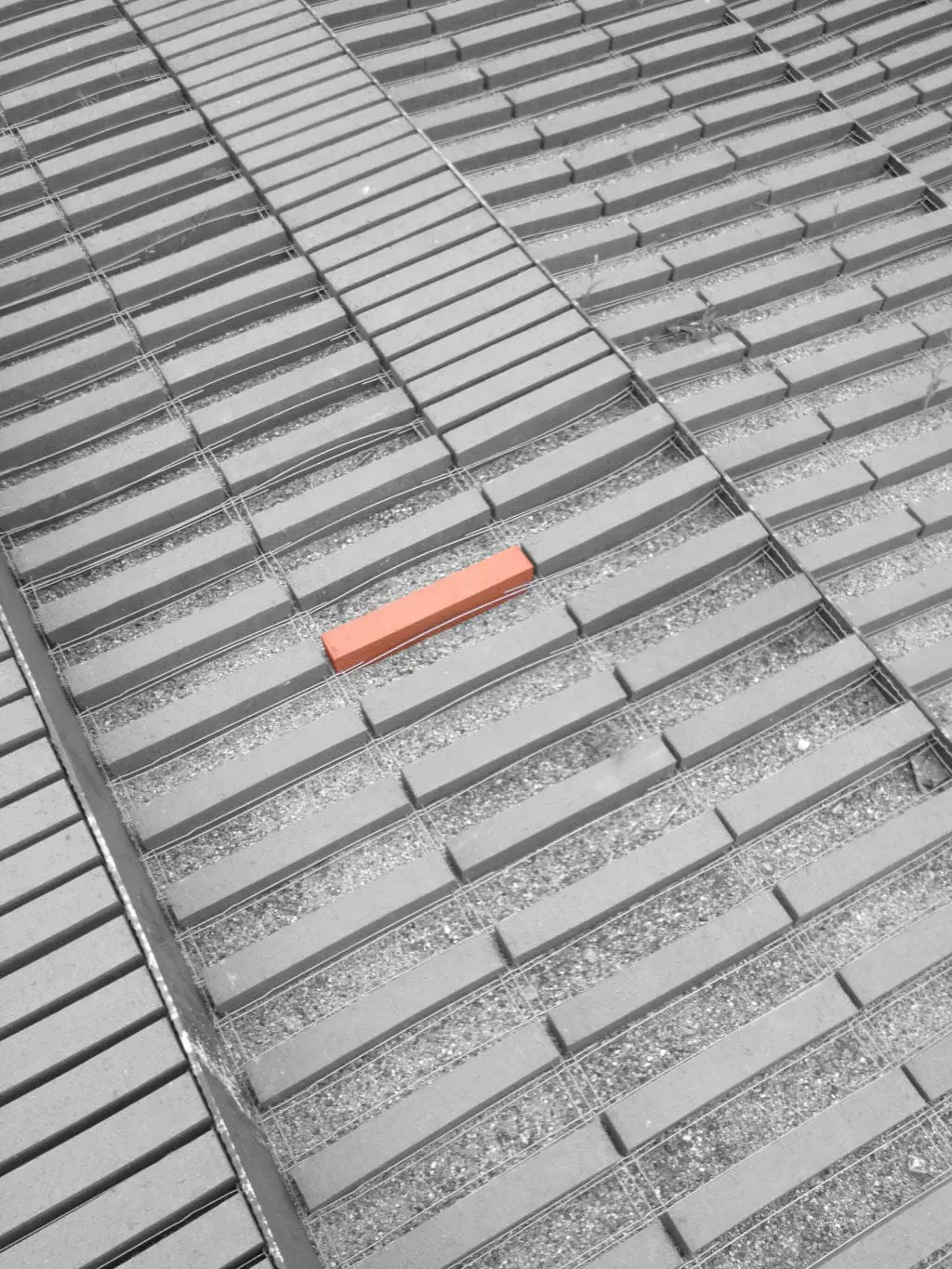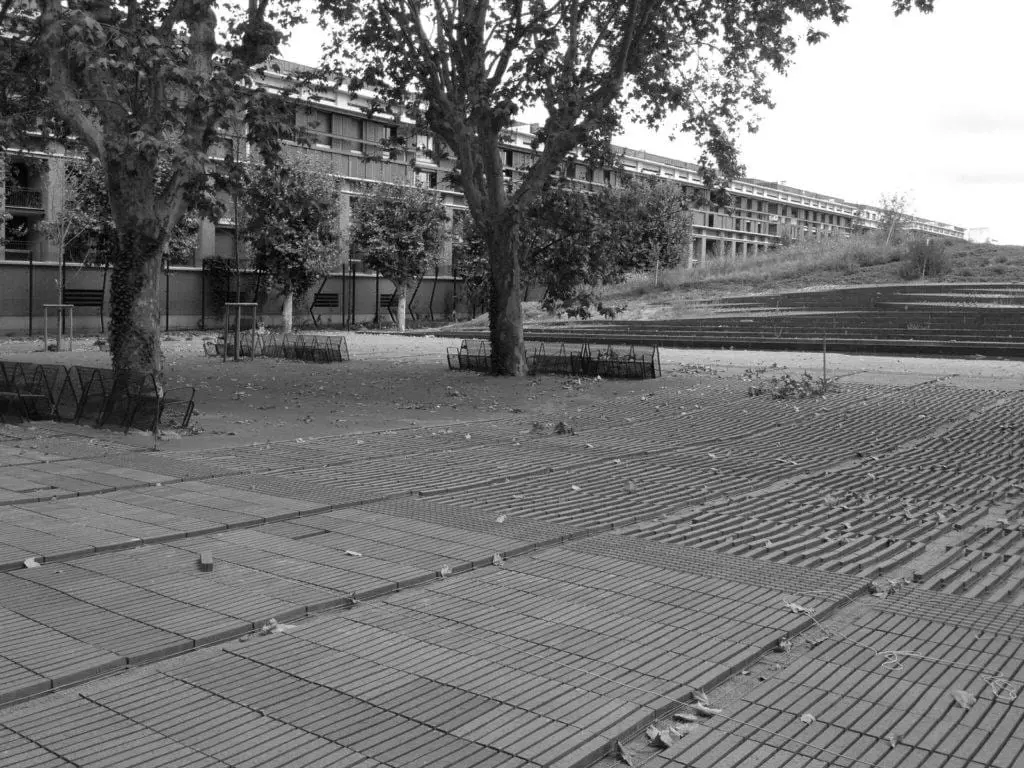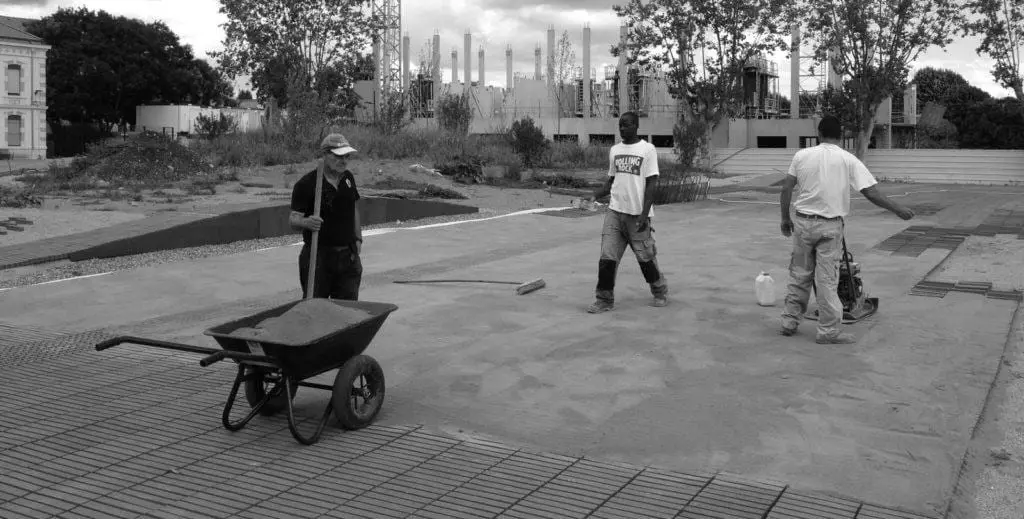On a small elevation and dominating the river Garonne, the place of the project has been marked throughout the history. Due to the presence of archaeological remains found in the subsoil, no excavation of more than 40cm of depth was authorized. At the same time, the council wanted a garden with trees and vegetation.
The solution proposed consists in raising the soil and creating a new topography using the soil extracted from the excavation of the adjoining buildings basements. The topography accentuates the relief and evokes the hill landscape of the Toulousaine region of Lauragais or Volvestre.
This undulating relief is installed inside the old square of arms, like a veil covering the archaeological site and its treasures, and allowing to plant trees, creating an oasis of vegetation in the central part of the garden.
In contrast with the clasical geometry of the enclosure original composition, the new topography brings a disorder. While keeping the view towards the building of the Etat Major, the new topography adds new horizons that overlap and vary as people wander around.
The garden, without losing its unity, is an addition of different places, landscapes and environments, formed by hills, paths, groves and large terraces. All of them suitable for different activities: children play areas, slides set on slopes, spaces for resting, for walking, meeting areas, etc.
It is in the valleys where the pathways appear, while the large pond is a shallow body of water that fills a slight concavity of the terrain.
The furniture, the pergola and the access doors, are manufactured with a deploye mesh of corten steel, making them homogeneous and allowing the growth of climbing plants.
The Niel garden is a dynamic space, with multiple environments under the same language. A language based on topography and materials that merge into a single intervention where everything seems obvious.
